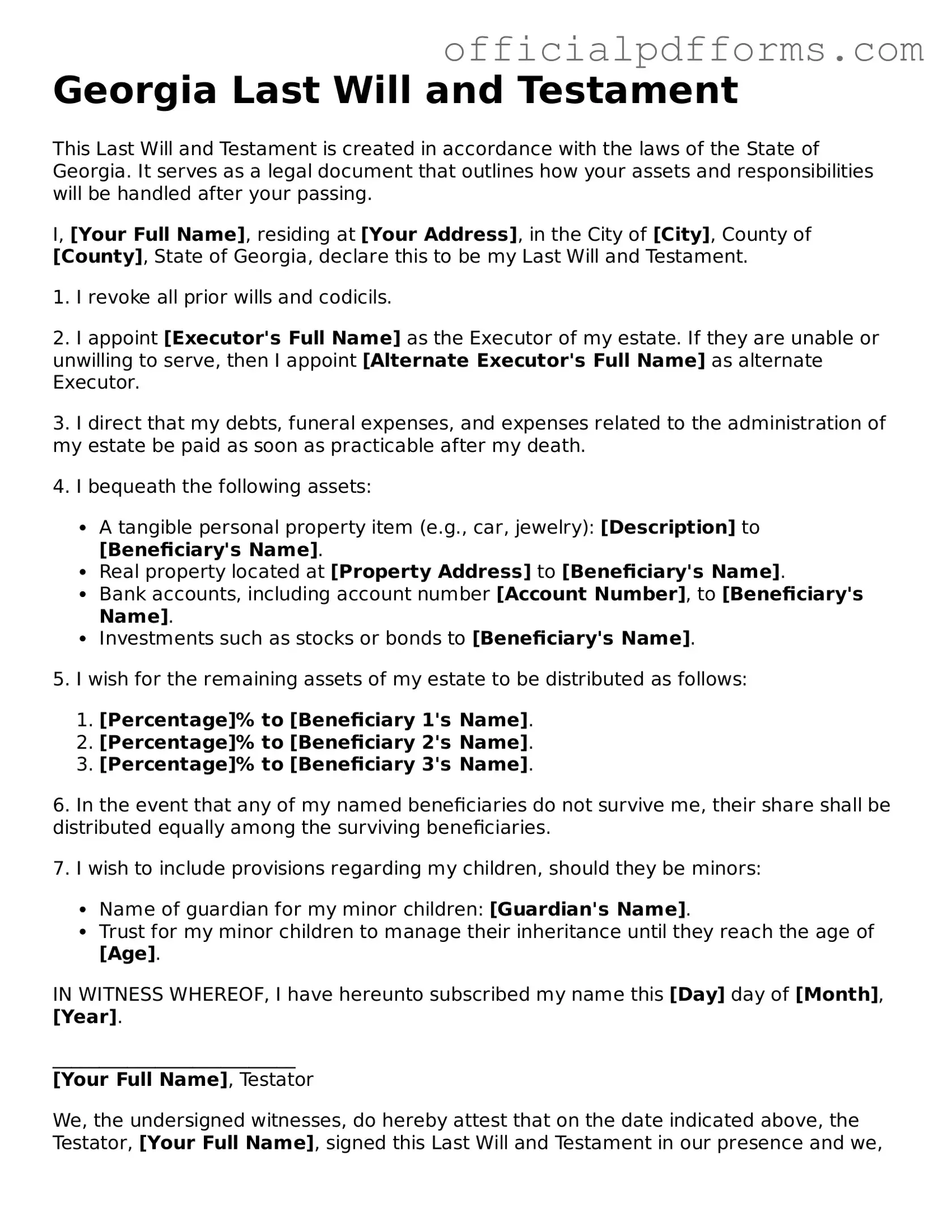What is a Last Will and Testament in Georgia?
A Last Will and Testament is a legal document that outlines how a person's assets and affairs will be handled after their death. In Georgia, this document allows individuals to specify beneficiaries for their property, appoint guardians for minor children, and name an executor to manage the estate.
Who can create a Last Will and Testament in Georgia?
In Georgia, any individual who is at least 14 years old and of sound mind can create a Last Will and Testament. However, it is advisable for individuals to seek legal advice, especially if their estate is complex or if there are significant assets involved.
What are the requirements for a valid Last Will and Testament in Georgia?
To be valid in Georgia, a Last Will and Testament must meet the following criteria:
-
The document must be in writing.
-
The testator (the person making the will) must sign the document.
-
At least two witnesses must sign the will, and they must be present at the same time as the testator.
Can I change my Last Will and Testament after it is created?
Yes, you can change your Last Will and Testament at any time while you are still alive. To make changes, you can either create a new will or add a codicil, which is an amendment to the existing will. It is important that any changes comply with Georgia’s legal requirements to ensure they are enforceable.
What happens if I die without a Last Will and Testament in Georgia?
If an individual dies without a Last Will and Testament, they are considered to have died intestate. In this case, Georgia's intestacy laws will determine how the deceased's assets are distributed. Generally, assets will go to the closest relatives, such as a spouse, children, or parents, depending on the family structure.
Can I disinherit someone in my Last Will and Testament?
Yes, you can disinherit someone in your Last Will and Testament. However, it is important to clearly state your intentions in the document. If you wish to disinherit a spouse or child, specific language should be used to avoid potential legal challenges.
How do I revoke a Last Will and Testament in Georgia?
To revoke a Last Will and Testament in Georgia, you can create a new will that explicitly states that the previous will is revoked. Alternatively, you can physically destroy the old will or write a statement of revocation. It is advisable to inform your executor and witnesses of the revocation to prevent confusion.
Is it necessary to have a lawyer to create a Last Will and Testament in Georgia?
No, it is not legally required to have a lawyer to create a Last Will and Testament in Georgia. However, consulting with a lawyer can provide valuable guidance, especially for those with complicated estates or specific wishes that may require legal expertise.
Where should I store my Last Will and Testament?
It is important to store your Last Will and Testament in a safe and accessible location. Common options include a safe deposit box, a fireproof safe at home, or with your attorney. Inform your executor and family members about where the will is stored to ensure it can be easily located when needed.
